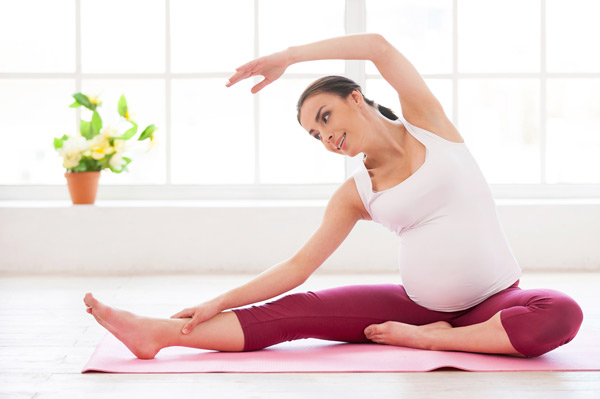
Regular Workout and healthy nutrition are crucial factors that contribute to a person’s overall health and well-being. It is ideal for all patients to care for their health, and exercise regularly as a part of their daily care.
However, when it comes to IVF, the rules for exercise change slightly. Evidence shows that rigorous physical activity can have a negative impact in IVF success because excessive exercise seems to tax the reproductive system and can alter your normal hormone patterns.
Higher exercise levels seem to affect the ability for the embryo to implant and also increases the chances of pregnancy loss. To be safe, women undergoing IVF treatments should keep their physical activity levels in the low-impact zone. Consider activities like walking, slow swimming and gentle stretching or restorative Yoga if you are someone who craves physical activity. Avoid medium to high-impact cardio workouts, weight lifting, running or biking or any activities that can have the risk of physical impact.
According to Dr. Mark Hornstein, lead researcher and clinical director of reproductive endocrinology at Brigham and Women’s Hospital (December 11, 2014), “Although exercise has many known health benefits, it does not seem to contribute to successful IVF outcomes.” He and his team reviewed the IVF outcomes of 2232 women and found that women who exercised for four or more hours per week, from one to nine years prior to their IVF cycle, seemed to have lower IVF success rates than those who didn’t.
Exercise Recommendations During IVF Treatment
- Patients should be careful about what types of exercises are performed.
- Patients should also be careful to work within their own comfort zone. For example, if a patient has not previously had a strenuous exercise routine, it is not advisable to start one once the IVF process has begun.
- For those who are active with their exercise routine, they may continue with this in the early stages of IVF, however, as treatment progresses (generally once injections begin), patients are advised to stick to low-impact exercises such as the following:
- Walking
- Stretching/yoga
- Light hand weights
The Risks of High Impact Exercise During IVF
Patients should avoid all unnecessary risks of IVF treatment in order to increase the chances of a successful pregnancy. The reason that patients are asked to avoid high-impact exercises during the IVF treatment process is because it can lead to ovarian torsion. When undergoing IVF treatment, the ovaries become enlarged. With the impact of strenuous, aerobic exercises, such as running, it is possible that the enlarged ovaries will become twisted, which will complicate the IVF treatment process. Even exercising the month after your cycle can lead to ovarian torsion.
“Ovarian torsion” is when your giant, swollen ovaries decide in their sympathy with your movement to do a cartwheel in your belly, thereby twisting off their blood supply. As you might imagine, if this happens you will be in pain like you would not believe. And unless you get to a hospital pronto and they untwist your ovary, you will lose it. And that is something no infertile gal needs in her life. |
So should IVF patients be overly cautious and consider bed rest after transfer? “Studies have failed to show a benefit from bed rest after transfer; although resting is usually recommended after transfer. But if rest is going to increase your stress level it’s probably better to go about your normal activities of daily living. It just depends on your personality.
Listen to your body and use this time to pamper yourself, planning for the exciting life ahead of you as you add another member to your family.

